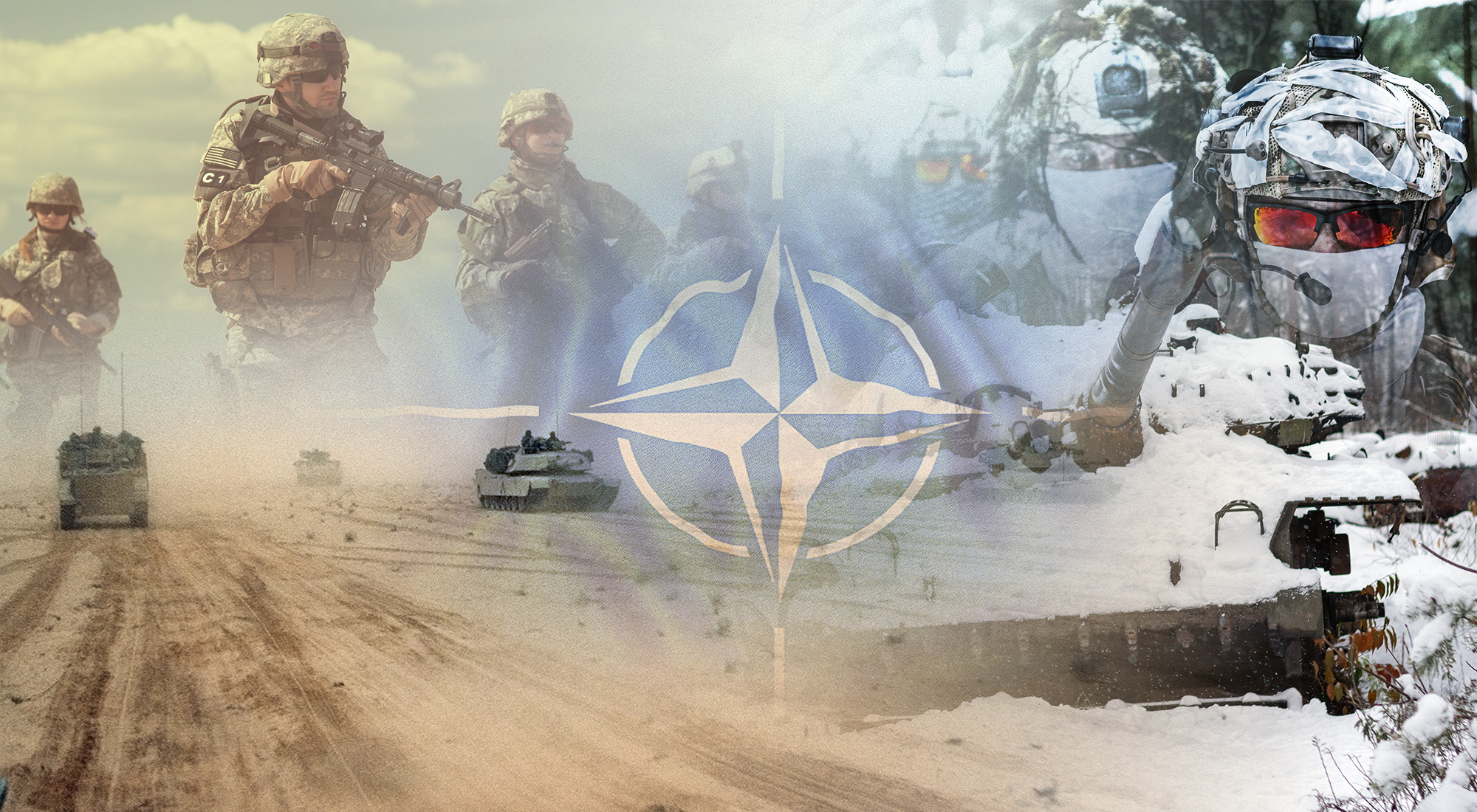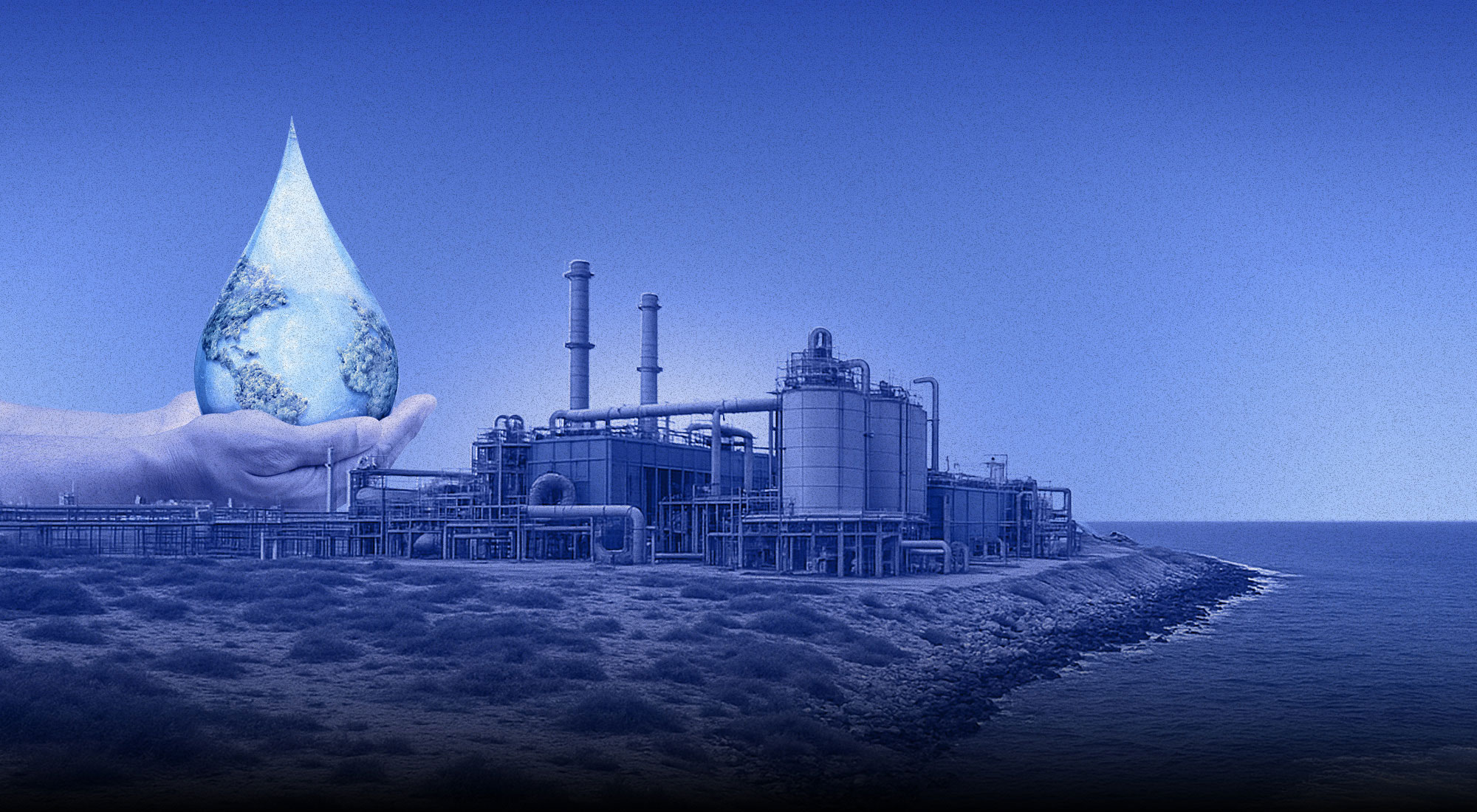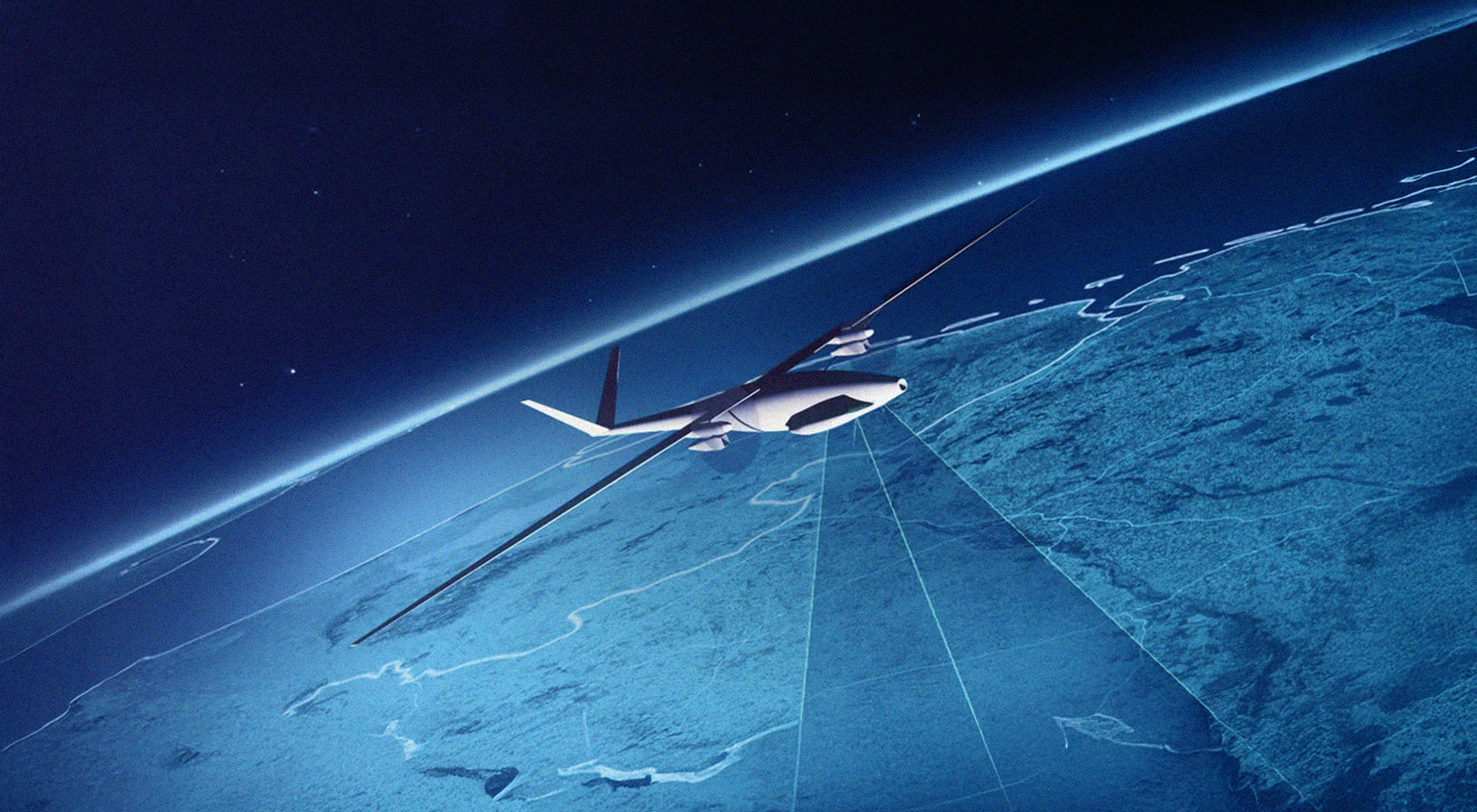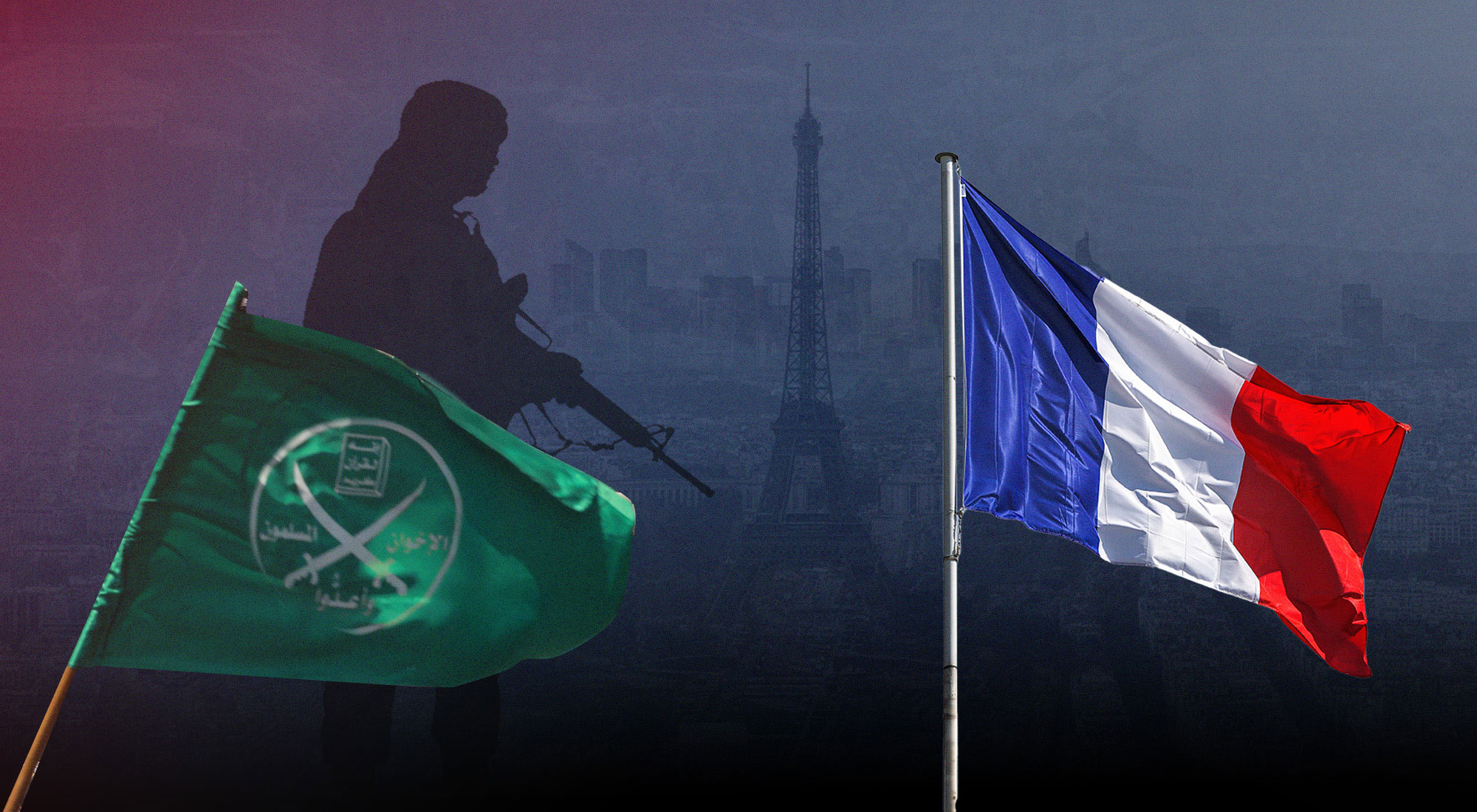Climate change, asserts the Intergovernmental Panel on Climate Change,[1] is a threat multiplier that is set to significantly complicate strategic planning for defence and security organisations like the North Atlantic Treaty Organisation (NATO). This is so because the fast unfolding, and highly unpredictable, patterns of environmental harm burden military forces with the need to not just prepare for individual events, such as floods, but also to develop an accurate understanding of the ways in which global warming could alter, influence, and/or shape the future trajectory of global (geo)politics.[2]
NATO itself first acknowledged the strategic potency of climate change as a crisis and threat multiplier in 2010,[3] an acknowledgement that was most recently reaffirmed in its 2022 Strategic Concept, which is a consensus-based and publicly available document outlining the purpose, principles, and priorities of the Alliance for the coming years.[4] The unequal impact of global warming on states and regions,[5] for instance, both deepens existing tensions amongst countries and creates a range of new winners and losers. Moreover, as nations articulate plans for either reversing or consolidating this trend, their efforts could further exacerbate tensions if they are deemed to have negative impacts on the climatic stability of neighbouring states/regions.[6] Also at play is the prospect of large-scale migration due to increased food and water scarcity and/or the emergence of persistent patterns of harsh environmental conditions such as prolonged droughts and devastating floods.[7]
Such observations are particularly relevant to the Middle East. Being one of the most environmentally distressed regions of the world,[8] dysfunctional politics, corruption, rising population, poor educational and healthcare systems, and lingering tensions amongst regional actors are likely to increase the likelihood of environmentally induced conflicts both inside and amongst regional states. This is of paramount concern to NATO given that conflict and fragility in the Middle East and North Africa directly impact the sociopolitical stability of NATO member states.[9]
As NATO begins to incorporate environmental awareness into its strategic deliberations and fine-tune its modus operandi and capabilities in response to the expected environmental disasters, this paper seeks to shed light on why the Middle East should be a priority region for the Alliance. Put otherwise, the main assertion of this paper is that efforts at containing Russia ought not to distract NATO from the unraveling climate-related crises in the Middle East, not least because a NATO member state – Turkey – is directly involved in many of them.
Why the Middle East matters to NATO: Turkey’s NATO membership, rise of nationalism, and intensifying technological rivalry
Developing a roadmap for systematic and environmentally-focused engagement with the Middle Eastern states, first and foremost, falls neatly within the Alliance’s broader objectives of becoming “the leading international organisation when it comes to understanding and adapting to the impact of climate change on security.”[10] As stated in the Strategic Concept 2022, crisis management and the ability to swiftly respond to crises across the globe remain a top priority for the Alliance, especially in regions such as the Middle East, where it has a vested interest in their socio-political stability.
More importantly, Turkey’s NATO membership necessitates the articulation of a detailed NATO-wide strategy for the Middle East; one that accounts for the possibility of environmentally induced clashes between Turkey and its neighbours. In fact, management of transboundary waters has already become a contentious issue between Iran and Turkey,[11] and the prospect of a prolonged conflict between the two cannot be overruled. What is worse, the looming Ankara-Tehran water dispute will include Iraq and Syria, and thus it has the potential to set in motion a range of unpredictable spill-over events, with both direct and indirect bearings on the quartet’s domestic and regional policies.
At the heart of the issue is Turkey’s Southeastern Anatolia Project,[12] which enables Ankara to weaponise water and use its control over water flow as an instrument of power. Ankara’s aggressive dam building in its predominantly Kurdish Southeastern region has caused severe drought and frequent dust storms in large parts of Iraq, Iran and Syria[13] and placed these countries’ already fragile public health infrastructures under immense pressure, while also devastating their agricultural sectors. Meanwhile, Turkey has refused to sign, let alone ratify, the UN-backed Convention on the Law of the Non-Navigational Uses of International Watercourses,[14] and there exists no legal framework for developing a multilateral approach to ease tensions and build common grounds. Worst of all, Ankara’s view on transboundary waters,[15] similar to Tehran,[16] is marred in national security terms, and hence it is highly unlikely that it would ever sign onto a multilateral and legally-binding resource sharing agreement.
Given the above, Iraq, Iran and Syria are highly skeptical of Turkey’s true intentions, and thus they have begun to develop a joint approach, spearheaded by Tehran, in order to exert collective pressure on Turkey.[17] To be sure, the trio has yet to agree on the framework of a collective approach but there can be no doubt that there is no shortage of reasons for them to be keen on pursuing such an initiative. Dust storms endanger public health and occasionally bring life to a standstill in affected cities, and droughts directly reduce crop cultivation and thus directly contribute to increased food insecurity in these countries. However, there is also the likelihood that their efforts could get entangled in the grander dynamics of Iran-Turkey regional rivalry, whereby Iran’s attempts at alliance-building will almost certainly be perceived as an opportunistic endeavour targeted squarely at limiting Turkey’s reach across the Fertile Crescent.[18] How this tussle would pan out is anyone’s guess, but it would have significant regional and domestic consequences.
Regionally, it not far-fetched to expect that these countries might support groups like the Kurdistan Workers’ Party (PKK) to carry out attacks against Turkey’s water infrastructure, especially since the bulk of dams are located in the predominantly Kurdish region of Turkey. In fact, Syria did so in the mid-2000s, when it sought to utilise its ties with the PKK as a bargaining chip in its negotiations with Turkey in order to “pry more water out of Turkey.”[19] For its part, Turkey would likely seek to discredit Iran amongst Iraqi politicians by highlighting Tehran’s consistent attempts to reduce water flows from the Arvand and Karun rivers to Iraq as a cause of drought in the country,[20] while simultaneously increasing its support for anti-Iranian and/or pro-Turkey factions in Iraq.
Ankara could also try to drive a wedge between Iran and Syria by making its recognition of Assad’s regime and/or guaranteed water supplies conditional upon the Syrian government distancing itself from Tehran. In doing so, more interestingly, Turkey could cooperate with Israel. Syria has witnessed a consistent depletion of its water resources ever since 1967, when it lost the Golan Heights to Israel.[21] Faced with dire water shortages, promise of access to water could be a tempting offer that the Syrian regime may not be able to resist, even if that means ditching Iran.
Domestically, disputes between these states could reenergise Kurdish independence movements, not least because most of the rivers pass through the Kurdish populated regions of Iran, Iraq, and Turkey. As a result, Kurdish parties are well placed to put their geography in the service of their broader struggle for independence against Ankara, Baghdad, and Tehran. Any move in that direction, however, is likely to incentivise these states to deploy brute force and crush independent movements; a prospect that would lead to massive human displacement, increased appeal of extremist groups amongst youngsters in the face of destroyed livelihoods, and a prolonged period of internal instability.

Figure 1. Location of dams within Tigris and Euphrates basins
Source: Elias Salameh and Nadhir Al-Ansari, “Deficient Developmental Planning Leading to Water Conflicts across Political Borders: The Way Forward,” Engineering 13 (2021), http://bitly.ws/zgRP.
Further complicating the picture is the perceived rise of nationalism in the Middle East,[22] which could encourage zero-sum thinking in tackling the effects of climate change and also heighten ethnosectarian tensions in ethnically diverse countries of the region. One can already see signs of the latter in Iran where climate-related public protests have been on the rise in the predominantly Arab[23] and Kurdish[24] regions of the country. The most plausible outcomes of zero-sum thinking, on the other hand, are linked to the use of technologies such as cloud seeding, the long-term consequences of which are still unknown.[25] This is particularly worrisome in the Gulf Cooperation Council (GCC), where the not-too-distant experiences of the past have convinced GCC lawmakers of the superiority of nationalism over regionalism.[26]
Finally, drawing up engagement plans for the Middle East serves the Alliance’s border objectives of expanding its political role, retaining its technological edge over its systematic rivals, and shaping standards on the responsible use of new technologies by military organisations.[27] The Middle East, in other words, can be a climate security test bed for NATO.
The human composition of environmentally induced public protests tends to be somewhat different from politically or economically inspired ones. Based on available evidence from recent protests in Iran,[28] environmental protests tend to bring out entire families onto the streets. This makes it more difficult for regional states to use force against them since protesters are not just young or middle-aged (wo)men, but also include children and the elderly. As such, it is highly likely that states will rely more heavily on AI-powered technologies, which enable faster and more accurate retrieval of biometric features, in order to prevent large crowds from gathering or identify the participants that could then be subjected to punitive measures.
China is already the leading supplier of such technologies to a number of Middle Eastern countries,[29] and that passive engagement with regional actors could further boost China’s status as the region’s technological partner of choice. Taking a clue from Beijing’s activities in the Horn of Africa, some speculate that China might try to facilitate collective deliberations on the strategic implications of environmentally induced crises in the Middle East, thereby strengthening its regional foothold as a technological partner and trendsetter.[30] To avoid such outcomes, NATO urgently needs to utilise the Istanbul Cooperation Initiative (ICI) – described as “a partnership forum that aims to contribute to long-term global and regional security by offering non-NATO countries in the broader Middle East region the opportunity to cooperate with NATO”[31] – and kick-start a conversation with the participating nations with regard to both supplies of technologies and, more importantly, the regulation of their use. Doing so is all the more important because it enables NATO to reactivate its political role and set itself up as the venue for discussions on the nexus of climate change, technological innovation, and national security.
Conclusion
As the region’s population continues to grow[32] and the old problems of dysfunctional governments and ramped corruption persist, climate change could ignite conflicts across the Middle East, where relations between states are marked by a high degree of mistrust. For its part, NATO cannot remain a bystander as regional actors tussle over their access to sacred resources because Turkey’s aggressive dam building directly contributes to the worsening of environmentally induced crises in a number of regional states. The good news is that NATO has the right tools and institutional mechanisms at its disposal to be able to play a constructive role in assisting regional actors to mitigate the effects of climate change, defuse tensions, and prevent conflicts. Its Climate Change and Security Centre of Excellence (CASCOE) and the Istanbul Cooperation Initiative (ICI), for example, are both invaluable platforms for shoring up partnerships with regional actors.
However, achieving these are conditional upon a number of other issues, including the status of Turkey within the Alliance. Ankara’s patchy relations with certain NATO members states,[33] such as France and Greece, could substantially dampen the prospect of a meaningful NATO strategy towards the Middle East. They could, for instance, argue that such undertaking would only benefit Ankara as opposed to the entire Alliance. Others, especially the Baltic Sea states, would likely question the strategic utility of spending resources on the Middle East at a time when countering Russia should be NATO’s unequivocal priority. To avoid such outcome, it follows, the first step towards designing an effective strategy for the Middle East requires the Alliance’s leadership to devise a communication blueprint that highlights the importance of engagement with the Middle East as part of its goal of becoming a leader in dealing with the strategic consequences of a changing climate. Member states also need to be reminded of the negative effects of climatically induced crises in the Middle East on the sociopolitical stability of the Euro-Atlantic zone.
References[1] The Intergovernmental Panel on Climate Change, Climate Change 2022: Impacts, Adaptation and Vulnerability (Cambridge & New York: Cambridge University Press, 2022), http://bitly.ws/yZbP.
[2] Jamie Shea, “NATO and Climate Change: Better Late Than Never,” German Marshal Fund, March 11, 2022, http://bitly.ws/yZck.
[3] NATO, Active Engagement, Modern Defence (Brussels: NATO Public Diplomacy Division, 2010), http://bitly.ws/yZcH.
[4] NATO, NATO 2022 Strategic Concept, Adopted by Heads of State and Government at the NATO Summit in Madrid on June 29, 2022, http://bitly.ws/yZd7.
[5] Abrahm Lustgarten, “The Great Climate Migration,” New York Times Magazine, http://bitly.ws/yZdx (accessed November 26, 2022).
[6] Ian Bremmer, The Power of Crisis: How Three Threats – and Our Response – Will Change the World (New York: Simon & Schuster, 2022).
[7] Abrahm Lustgarten, “The Great Climate Migration,” New York Times Magazine, http://bitly.ws/yZdx (accessed November 26, 2022).
[8] Ranj Alaaldin, “Climate Change May Devastate the Middle East. Here’s How Governments Should Tackle It,” Brookings, March 14, 2022, http://bitly.ws/yZe6.
[9] NATO, NATO 2022 Strategic Concept, Adopted by Heads of State and Government at the NATO Summit in Madrid on June 29, 2022, http://bitly.ws/yZd7.
[10] Ibid.
[11] Nima Khorrami, “Amid Dust Storms and Drought, Turkey and Iran Are at Odds over Transboundary Water Management,” Middle East Institute, June 13, 2022, http://bitly.ws/yZeg.
[12] Ilektra Tsakalidou, “The Great Anatolia Project: Is Water Management a Panacea or Crisis Multiplier for Turkey’s Kurds?” New Security Beat, August 5, 2013, http://bitly.ws/yZeq.
[13] Nima Khorrami, “Amid Dust Storms and Drought, Turkey and Iran Are at Odds over Transboundary Water Management,” Middle East Institute, June 13, 2022, http://bitly.ws/yZeg.
[14] David P. Forsythe, “Water and Politics in the Tigris–Euphrates Basin: Hope for Negative Learning?” in Jean Axelrad Cahan, Water Security in the Middle East (London: Anthem Press, 2017).
[15] Ibid.
[16] Nima Khorrami, “Amid Dust Storms and Drought, Turkey and Iran Are at Odds over Transboundary Water Management,” Middle East Institute, June 13, 2022, http://bitly.ws/yZeg.
[17] Ibid.
[18] Ibid.
[19] David P. Forsythe, “Water and Politics in the Tigris–Euphrates Basin: Hope for Negative Learning?” in Jean Axelrad Cahan, Water Security in the Middle East (London: Anthem Press, 2017).
[20] Muhammad Jawad Adib, “Iran, Iraq Exchange Accusations over Water Flow,” Al Monitor, January 25, 2022, http://bitly.ws/yZg8.
[21] David P. Forsythe, “Water and Politics in the Tigris–Euphrates Basin: Hope for Negative Learning?” in Jean Axelrad Cahan, Water Security in the Middle East (London: Anthem Press, 2017).
[22] The Arab Gulf States Institute in Washington and SEPAD, “Sectarian Identities and the Rise of Nationalism in the Middle East” [Online Event], June 9, 2021, http://bitly.ws/yZgW.
[23] Babak Dehghanpisheh, “Water Crisis Spurs Protests in Iran,” Reuters, March 29, 2018, http://bitly.ws/yZhS.
[24] “People Hold Massive Protest Over Lack Of Water In Southwestern Iran,” Iran International, August 16, 2022, http://bitly.ws/yZi3.
[25] Ian Bremmer, The Power of Crisis: How Three Threats – and Our Response – Will Change the World, (New York: Simon & Schuster, 2022).
[26] Nima Khorrami, “Doha’s Diversification Drive Post-Blockade,” Insight No. 276, Middle East Institute – National University of Singapore, March 29, 2022, http://bitly.ws/yZij.
[27] NATO, NATO 2030: United for a New Era, Analysis and Recommendations of the Reflection Group Appointed by the NATO Secretary General, November 25, 2020, http://bitly.ws/yZiL.
[28] Cornelius Adebahr and Olivia Lazard, “A Wilting World,” Carnegie Endowment for International Peace, September 6, 2022, http://bitly.ws/yZiT.
[29] Steven Fieldstein, “The Global Expansion of AI Surveillance,” Carnegie Endowment for International Peace, September 17, 2019, http://bitly.ws/yZjb.
[30] Nima Khorrami, “Amid Dust Storms and Drought, Turkey and Iran Are at Odds over Transboundary Water Management,” Middle East Institute, June 13, 2022, http://bitly.ws/yZeg.
[31] See NATO, “Istanbul Cooperation Initiative (ICI),” September 1, 2022, http://bitly.ws/yZjx.
[32] UNICEF, MENA Generation 2030, April 2019, http://bitly.ws/yZjT.
[33] Kalev Stoicescu and Hille Hanso, “Turkey’s Future Role in NATO,” RKK International Centre for Defence and Security, January 17, 2022, http://bitly.ws/yZk6.








